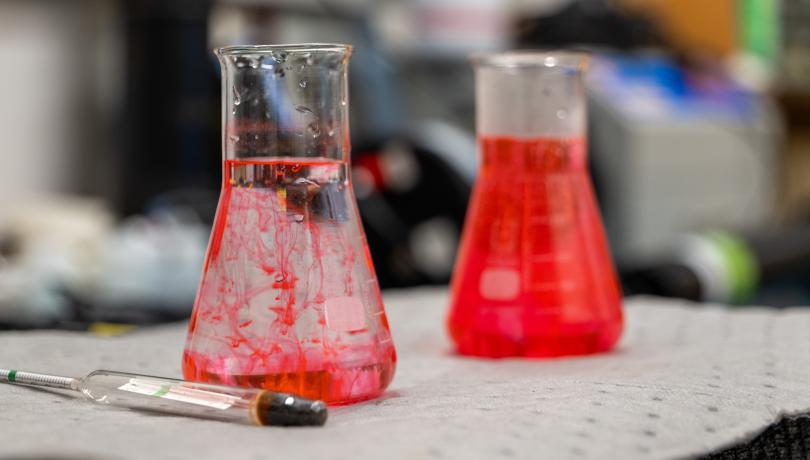In this ‘In Depth’, we talk about the situation of LGBTQIA+ people at the ICM, the main challenges and some of the benchmark initiatives to achieve full inclusion.

Sexual and gender diversity remains one of the great invisibles in the scientific world. Although recent years have seen progress toward more inclusive work environments, many research centers in Spain still lack real data and diagnoses regarding the experiences of the LGBTQIA+ community. This lack of information not only hinders the design of effective policies but also perpetuates barriers that affect the well-being and professional development of many individuals.
In this context, the Institut de Ciències del Mar (ICM) took a first step with a seminar and participatory workshop held on March 27, focused on analyzing the situation of the LGBTQIA+ community at our center. The activity, led by Xabier López-Alforja (member of the Equality and Diversity group and ICM Young Researchers), served to understand better current challenges, present key initiatives such as those from the PRISMA association — a pioneer in promoting diversity in science across Europe — and, above all, to create a safe space for collective reflection.
How is diversity perceived at the ICM?
The meeting brought together around 40 people, mostly early-career researchers (ECRs), with an average age of 28 and diverse profiles: predoctoral staff, technicians, and undergraduate and master's students. Through an anonymous form, we collected perceptions about the inclusion of the LGBTQIA+ community at the ICM. While we are aware that this initial assessment has a generational bias — younger individuals tend to identify more openly as part of the community1 — the data provide a first snapshot of our internal dynamics.
Among the participants, 45% identified as LGBTQIA+, with the majority identifying as bisexual (20%), followed by lesbian (10%) and gay (7.5%) individuals. Other identities, such as asexuality, trans identities, and people currently exploring their identity, were also represented. These data show that diversity already exists in our corridors, even if it is not always sufficiently visible.

But how do LGBTQIA+ individuals feel within the ICM? Do they perceive the environment as safe and respectful? Is the ICM prepared to respond to the concerns of the community? Although most respondents viewed the center's climate positively, 55% admitted to having hidden their identity at some point for fear of potential consequences. This situation of forced invisibility can negatively affect mental health (higher levels of anxiety, depression, emotional exhaustion...) and professional development, as numerous studies have already documented.
Subtle… and not-so-subtle discrimination
The assessment also explored perceptions of safety and the presence of discriminatory attitudes. While 70% reported neither experiencing nor witnessing discrimination, 25% said they had observed LGBTQIA+phobic comments or attitudes, and 5% stated they had experienced them directly. The most common microaggressions involved derogatory comments or the incorrect use of pronouns, often coming from individuals in positions of authority. There were also testimonies about tense relationships between PhD students and their PIs related to sexual or gender identity.
An additional and concerning finding: over 80% of respondents said they were unaware of the ICM's protocols for addressing discrimination, and 62.5% would not know whom to turn to in case of harassment. This troubling lack of awareness stands in contrast with the legal obligations set by the recent Royal Decree 1026/2024, which mandates public institutions to implement specific measures to ensure equality and protect against discrimination based on sexual orientation, gender identity, or gender expression. The decree prioritizes the creation of a mandatory anti-harassment protocol for LGBTQIA+phobia, with clear reporting and resolution procedures applicable to all staff.

What grade does the LGBTQIA+ community give the ICM?
Using a scale from 0 to 10, participants evaluated various aspects of the ICM’s commitment to diversity. The overall result was positive: the center was seen as a place where one can be openly LGBTQIA+ (7.5/10) and where there is a general sense of safety (7.4/10).
However, ratings were lower in more specific areas: inclusive language use, the existence of accessible protocols, support resources, and inclusive hiring policies barely reached a passing grade (5/10). Trans-inclusive facilities and procedures were rated the lowest (3.5/10), highlighting shortcomings such as the lack of gender-neutral bathrooms, effective reporting mechanisms, or adapted administrative processes. In addition, hiring and promotion policies were not considered inclusive enough to ensure equal opportunities for LGBTQIA+ individuals (5.4/10), contrary to the requirements of Article 8.3 of Royal Decree 1026/2024, which pays special attention to trans people, a group in a particularly vulnerable situation.
From ideas to proposals
During the second part of the seminar, in workshop format, proposals were discussed to advance toward a more inclusive ICM. Using the PRISMA association’s decalogue as a framework, three priority lines were identified:
- Protection: creation of a specific protocol against LGTBIfobia, with clear channels for reporting and follow-up, and the role of a specialized mediator.
- Training: organization of talks and workshops with experts from the community, mandatory training for group leaders and management staff, and dissemination of best practices.
- Visibility: activities during Pride Month, use of inclusive language in institutional communications, visibility of pronouns, and representation of the community on internal networks and channels.
Some of these measures are already underway. The ICM Equality and Diversity Group is currently working on a specific action plan, and collaborations have been established with organizations such as the Maritime Museum of Barcelona and PRISMA. However, the results of the diagnosis show that there is still a long way to go for LGBTQIA+ inclusion to become a structural reality, not just a good intention.
Towards a science that leaves no one behind
The ICM-CSIC already has a solid foundation: an environment perceived as mostly safe, a community willing to change, and a committed working group. Now, the challenge is to transform that willingness into concrete, measurable, and sustained actions over time.
Committing to more inclusive science is not only an act of social justice but also an essential condition for creating healthy, creative, and sustainable work environments. The voices gathered in this participatory exercise remind us that diversity and the desire for change are here. Listening to them and acting accordingly is undoubtedly the best way to build the future we want for our science.